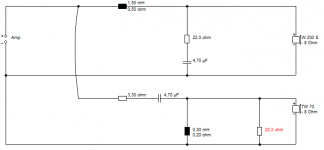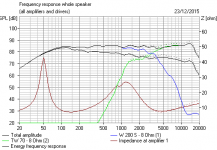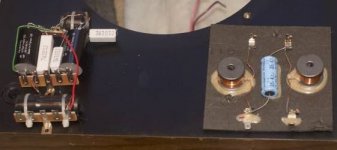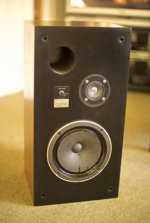Yes, I've fixed the images, which didn't upload right at first with the paperclip symbol.
Just plug those speakers in. I can't think that anything is likely to be broken. Tarred surrounds go on forever. They used some highly cancerous toluene solvents back in the day, along with poisonous lead solder. Workers were at risk in manufacturing. But hey, it works. 😀
You usually unscrew the bass to have a look inside, but note the wiring colour codes on a piece of paper if you unclip anything.
Just plug those speakers in. I can't think that anything is likely to be broken. Tarred surrounds go on forever. They used some highly cancerous toluene solvents back in the day, along with poisonous lead solder. Workers were at risk in manufacturing. But hey, it works. 😀
You usually unscrew the bass to have a look inside, but note the wiring colour codes on a piece of paper if you unclip anything.
Thanks Steve, that's really helpful. I'm not a natural DIY'er, so I may need to show the diagram to someone far more knowledgable than myself. My yearning far outstrips my talent, but I do have good ears though! 🙂
I'll give them some gentle watts later today.
I'm hoping I may be able bring these babies to a quality where they punch well beyond their weight. I kinda hoped they could have a Q car quality, where they outperform modern speakers and catch somewhat sniffy audiophiles off guard. Similarly I have a three box Tresham amp combo (pre,power and power supply) from yesteryear that catches people off guard completely. Tresham was early work of Richard Dunn who went on to do NVA amps, that have quite a following.
I'll give them some gentle watts later today.
I'm hoping I may be able bring these babies to a quality where they punch well beyond their weight. I kinda hoped they could have a Q car quality, where they outperform modern speakers and catch somewhat sniffy audiophiles off guard. Similarly I have a three box Tresham amp combo (pre,power and power supply) from yesteryear that catches people off guard completely. Tresham was early work of Richard Dunn who went on to do NVA amps, that have quite a following.
You can get all the bits easily enough. You need some tools too, so it IS a substantial investment.
Components
Maplin 40W Mains Soldering Iron Kit | Maplin
What I do is design simple unfussy circuits that you just set up by ear with simple resistor changes for tweeter level.
This is a simple and cheap project I admire, using a loud PA bass:
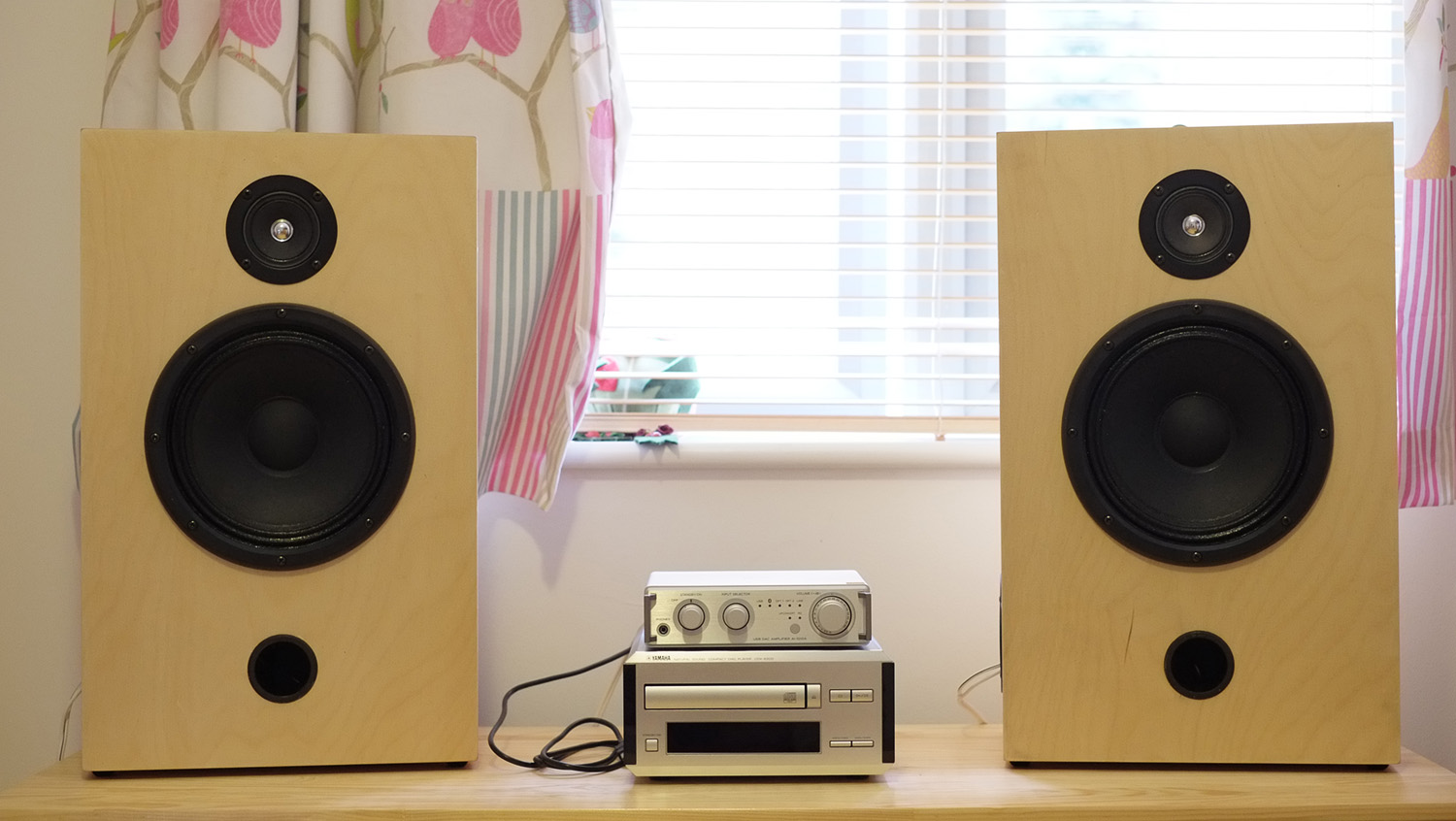
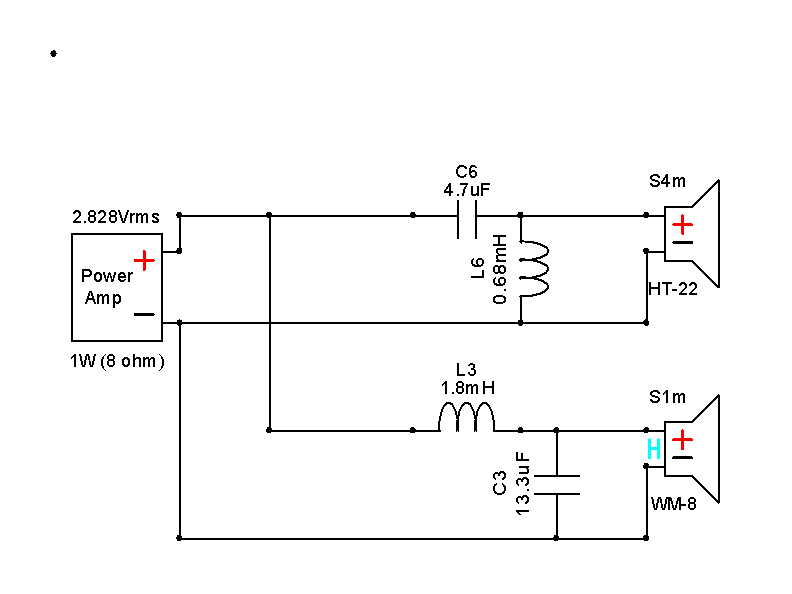
http://www.diyaudio.com/forums/multi-way/147632-classic-monitor-designs-25.html#post4428857
I did a homage to that simple 8" bass plus cone tweeter like this:
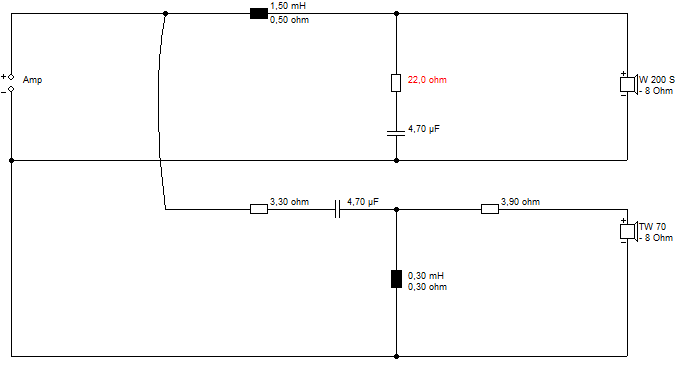
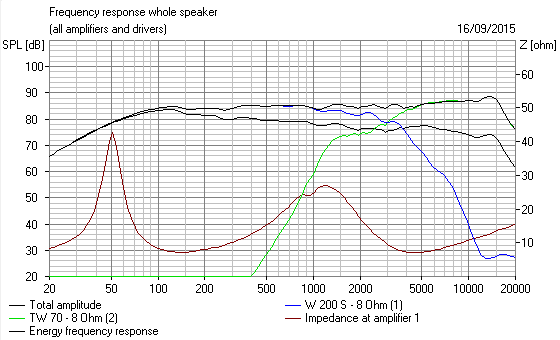
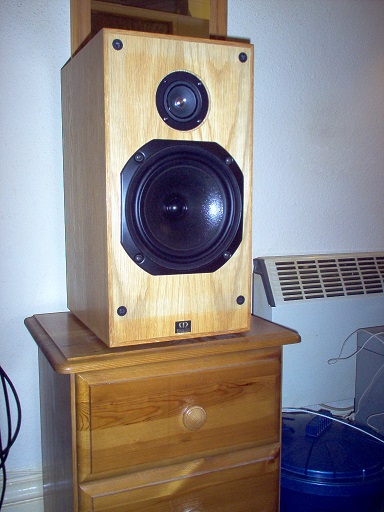
Shallow filter which does little to the bass response, but EXTREMELY good to listen to. FWIW, you'd be unlikely to find a crossover of even that modest sophistication in anything less that a £700 speaker that you buy. I have more complex designs, of course. But simple can be good. 😎
Components
Maplin 40W Mains Soldering Iron Kit | Maplin
What I do is design simple unfussy circuits that you just set up by ear with simple resistor changes for tweeter level.
This is a simple and cheap project I admire, using a loud PA bass:


http://www.diyaudio.com/forums/multi-way/147632-classic-monitor-designs-25.html#post4428857
I did a homage to that simple 8" bass plus cone tweeter like this:



Shallow filter which does little to the bass response, but EXTREMELY good to listen to. FWIW, you'd be unlikely to find a crossover of even that modest sophistication in anything less that a £700 speaker that you buy. I have more complex designs, of course. But simple can be good. 😎
The first step should be just to hook them up, run them in a bit, and see how they sound. You might just like them as they are, and if not you'll have guilt free fun modifying them.
I've rigged them up and they sound rather fine. Albeit, I removed grill from second speaker and saw some damage to tweeter that I did not recall the day before. Doh!! (Looking at kids and cats...all of which are looking a bit sheepish! No hands or paws going up!) Not sure if damage is terminal to tweeter. Still sounds OK, but has rather taken the shine off a rather pristine looking find. Maybe however this will force me into improvements?
You can replace tweeters:
http://www.monacor.co.uk/categories/hi-fi-tweeters/vnr/100180/
I don't know about running them in. But definitely give them a whirl. I'd certainly look for corroded connectors in an old speaker, because rust never sleeps. If I hear the horrible fuzzy sound of voicecoil rubbing on the bass due to age-related spider sagging I might rotate them 90 degrees.
If the tweeter level is suppressed I might suspect dried up ferrofluid in the gap. Ferrofluid kinda sets into a solid ferric oxide lump after 20 years.
When I first heard my old bargain £20 Sony E44 second-hand speakers, I thought NICE LIVELY BASS. Terrible fuzzy top end.
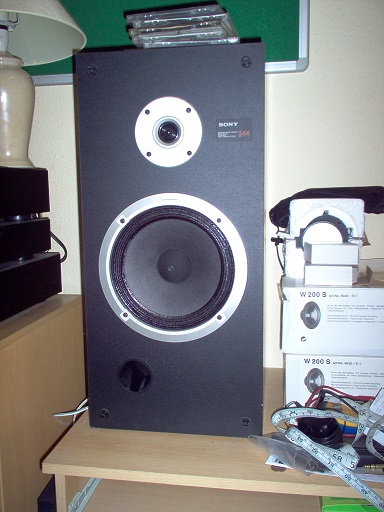
Next I had a look inside. Ridiculous single cap crossover. The plastic cone tweeter is actually very good on a proper crossover. And the bass needed very little work.
http://www.monacor.co.uk/categories/hi-fi-tweeters/vnr/100180/
The first step should be just to hook them up, run them in a bit, and see how they sound. You might just like them as they are, and if not you'll have guilt free fun modifying them.
I don't know about running them in. But definitely give them a whirl. I'd certainly look for corroded connectors in an old speaker, because rust never sleeps. If I hear the horrible fuzzy sound of voicecoil rubbing on the bass due to age-related spider sagging I might rotate them 90 degrees.
If the tweeter level is suppressed I might suspect dried up ferrofluid in the gap. Ferrofluid kinda sets into a solid ferric oxide lump after 20 years.
When I first heard my old bargain £20 Sony E44 second-hand speakers, I thought NICE LIVELY BASS. Terrible fuzzy top end.

Next I had a look inside. Ridiculous single cap crossover. The plastic cone tweeter is actually very good on a proper crossover. And the bass needed very little work.
Just keeping you posted. New tweeters on their way from Germany, and new components to build improved crossover coming from Maplins and Falcon Acoustics. Many thanks to Steve Ponsford (System 7) for his advice. Watch this space, or should I say listen to this space...
Fantastic work, beachcomber. I think in hindsight those component leads could have been left a bit longer, just makes soldering and heat issues less. But this is a nice circuit IMO.
But I've learned something about it. I thought I was hearing a bit of cone breakup from the bass with it, but I may have been wrong. I now think it needs a 22R across the tweeter to improve the load to a typical solid state amplifier, and hence stability, at supersonic frequencies. It should sound cleaner at the top end.
Bear in mind we are using a slightly different tweeter in the sim. But that doesn't affect things much.
Based on listening tests you may want to adjust the level of the tweeter. My suggested modification is just to replace the 3W 3.3R with a 7W 22R shunt. If you want 2dB reduction on the tweeter, you use both. But my prediction is you will get a more detailed sounding top end either way. 😎
But I've learned something about it. I thought I was hearing a bit of cone breakup from the bass with it, but I may have been wrong. I now think it needs a 22R across the tweeter to improve the load to a typical solid state amplifier, and hence stability, at supersonic frequencies. It should sound cleaner at the top end.
Bear in mind we are using a slightly different tweeter in the sim. But that doesn't affect things much.
Based on listening tests you may want to adjust the level of the tweeter. My suggested modification is just to replace the 3W 3.3R with a 7W 22R shunt. If you want 2dB reduction on the tweeter, you use both. But my prediction is you will get a more detailed sounding top end either way. 😎
Attachments
I had a pair of these for several years, unfortunately one of the woofers died... I quite liked the sound. IIRC, Xover was 2nd order electrical, ~.27mH & 4.7uF on both woofer & tweeter. I still use the cabinets as test boxes, & the tweeters are used whenever I need a pair for a Q&D test. I think the woofers need a larger cabinet for best bass, around 50 L. I've probably got the TS parameters in my archive, but a lot of Shiraz has flowed since I tested them....
Many thanks Steve for the extra ideas. I'll give this set up a good listen then decide if I can pick up on any areas for improvement. Happy Christmas and wishing your frequency responses are 'deep and crisp and even'! 🙂
Glad my project has piqued your interest PeteMck. I'm just scratching the surface of DIY, but my appetite is whetted to explore how to get to certain sonic characteristics I crave. Enjoy your Oz Crimble. Weather shockingly bad here.
from the crypt - Woofer TSPs: Fs 65Hz, Re 6 ohm, Le 1.4mH, Qes .79, Qms 3.45, Qt .64, Vas 18.5L, Sd 177 Cm sq, efficiency 91dB. A Synrta capture shows a slight peak at 3.5 Khz, so crossover lower. Can't guarantee how accurate these are, done years ago when I was learning to use Arta, but a med-high Q driver with good efficiency
- Status
- Not open for further replies.
- Home
- Loudspeakers
- Multi-Way
- Sansui AA3900 speakers - Worth some TLC?





